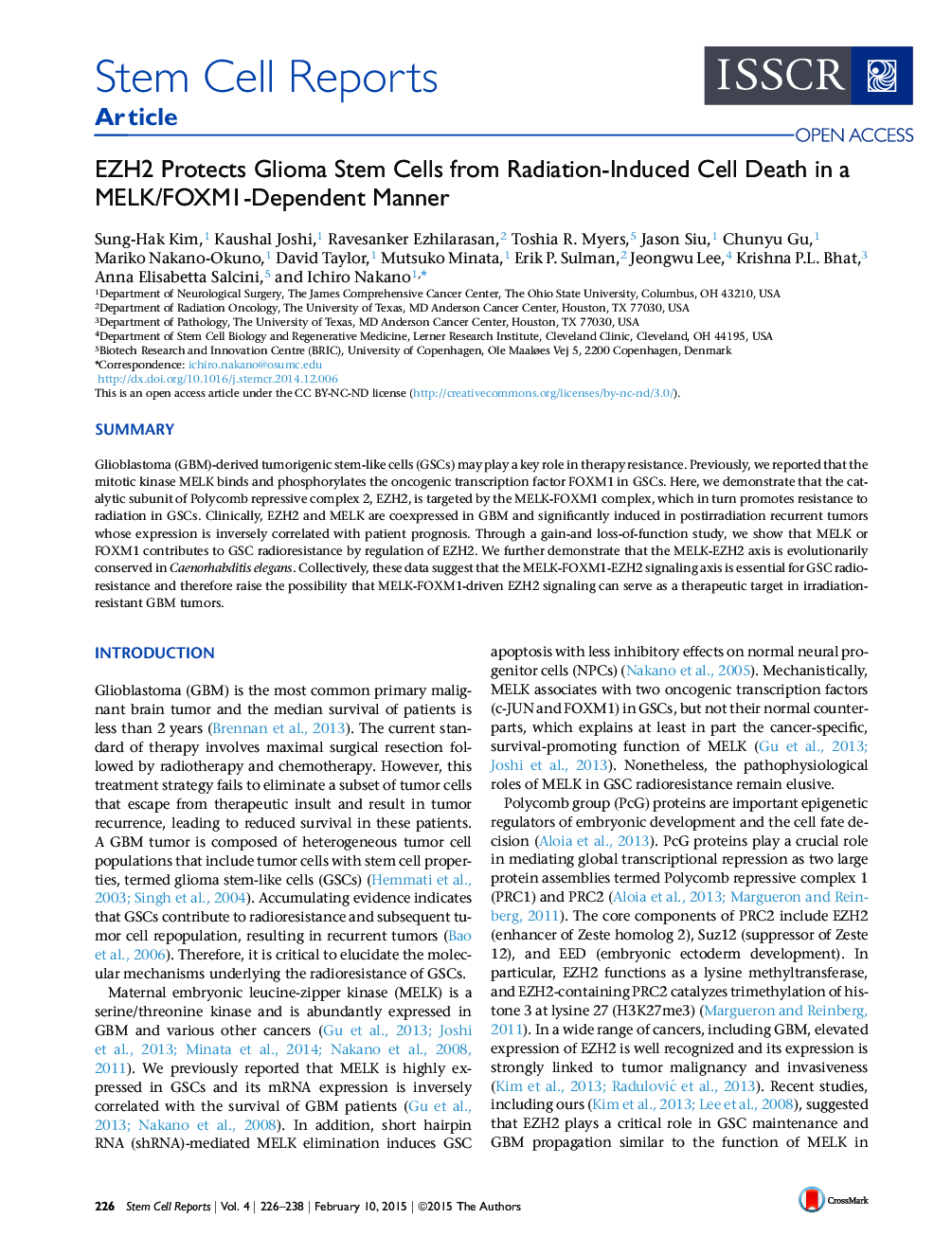| Article ID | Journal | Published Year | Pages | File Type |
|---|---|---|---|---|
| 2093561 | Stem Cell Reports | 2015 | 13 Pages |
•EZH2 and MELK are coexpressed in GBM and post-IR recurrent tumors•MELK-mediated EZH2 is required for GSC radioresistance•MELK/EZH2 functions in radioresistance are evolutionarily conserved
SummaryGlioblastoma (GBM)-derived tumorigenic stem-like cells (GSCs) may play a key role in therapy resistance. Previously, we reported that the mitotic kinase MELK binds and phosphorylates the oncogenic transcription factor FOXM1 in GSCs. Here, we demonstrate that the catalytic subunit of Polycomb repressive complex 2, EZH2, is targeted by the MELK-FOXM1 complex, which in turn promotes resistance to radiation in GSCs. Clinically, EZH2 and MELK are coexpressed in GBM and significantly induced in postirradiation recurrent tumors whose expression is inversely correlated with patient prognosis. Through a gain-and loss-of-function study, we show that MELK or FOXM1 contributes to GSC radioresistance by regulation of EZH2. We further demonstrate that the MELK-EZH2 axis is evolutionarily conserved in Caenorhabditis elegans. Collectively, these data suggest that the MELK-FOXM1-EZH2 signaling axis is essential for GSC radioresistance and therefore raise the possibility that MELK-FOXM1-driven EZH2 signaling can serve as a therapeutic target in irradiation-resistant GBM tumors.
